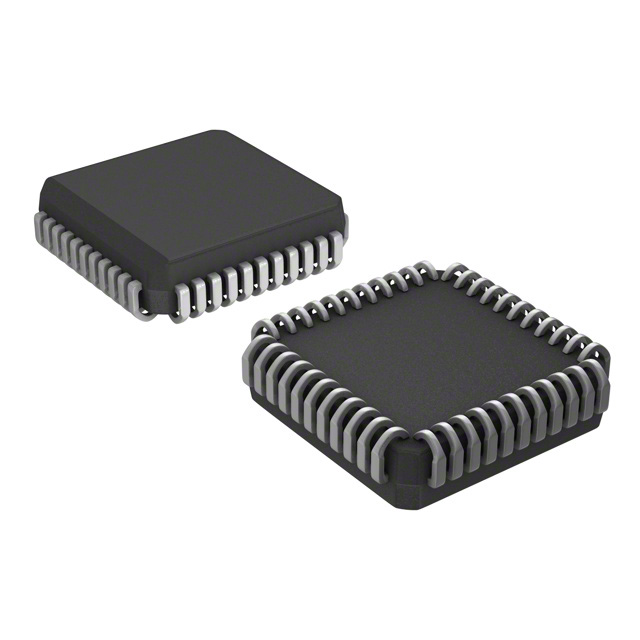Viz Specifikace pro podrobnosti o produktu.

AT80C32X2-SLRUM
Product Overview
- Category: Microcontroller
- Use: Embedded systems, industrial automation, consumer electronics
- Characteristics: High-performance, low-power consumption, versatile
- Package: Surface Mount Technology (SMT)
- Essence: Advanced microcontroller with enhanced features
- Packaging/Quantity: Tape and reel packaging, available in various quantities
Specifications
- Architecture: 8-bit
- Clock Speed: Up to 33 MHz
- Program Memory Size: 32 KB
- RAM Size: 1 KB
- Number of I/O Pins: 32
- Communication Interfaces: UART, SPI, I2C
- Operating Voltage Range: 2.7V to 5.5V
- Operating Temperature Range: -40°C to +85°C
Detailed Pin Configuration
The AT80C32X2-SLRUM microcontroller has a total of 40 pins. The pin configuration is as follows:
- VCC - Power supply voltage
- GND - Ground
- P0.0 - General-purpose I/O pin
- P0.1 - General-purpose I/O pin
- P0.2 - General-purpose I/O pin
- P0.3 - General-purpose I/O pin
- P0.4 - General-purpose I/O pin
- P0.5 - General-purpose I/O pin
- P0.6 - General-purpose I/O pin
- P0.7 - General-purpose I/O pin
- RST - Reset pin
- P1.0 - General-purpose I/O pin
- P1.1 - General-purpose I/O pin
- P1.2 - General-purpose I/O pin
- P1.3 - General-purpose I/O pin
- P1.4 - General-purpose I/O pin
- P1.5 - General-purpose I/O pin
- P1.6 - General-purpose I/O pin
- P1.7 - General-purpose I/O pin
- XTAL1 - Crystal oscillator input
- XTAL2 - Crystal oscillator output
- EA/VPP - External Access/Programming Enable
- ALE/PROG - Address Latch Enable/Program pulse
- PSEN - Program Store Enable
- P2.0 - General-purpose I/O pin
- P2.1 - General-purpose I/O pin
- P2.2 - General-purpose I/O pin
- P2.3 - General-purpose I/O pin
- P2.4 - General-purpose I/O pin
- P2.5 - General-purpose I/O pin
- P2.6 - General-purpose I/O pin
- P2.7 - General-purpose I/O pin
- RXD - UART receive data
- TXD - UART transmit data
- INT0 - External interrupt 0
- INT1 - External interrupt 1
- T0 - Timer 0 external input
- T1 - Timer 1 external input
- WR - External data memory write strobe
- RD - External data memory read strobe
Functional Features
- High-performance 8-bit microcontroller with advanced architecture
- Versatile I/O capabilities for interfacing with various devices
- Multiple communication interfaces for seamless connectivity
- Low-power consumption for energy-efficient applications
- Robust and reliable operation in harsh environments
- Extensive range of built-in peripherals for enhanced functionality
Advantages and Disadvantages
Advantages: - High clock speed allows for fast execution of instructions - Ample program memory size for complex applications - Low-power consumption extends battery life in portable devices - Versatile I/O pins enable flexible interfacing with external components - Wide operating voltage range accommodates different power supply options
Disadvantages: - Limited RAM size may restrict the complexity of data manipulation - Lack of built-in analog-to-digital converter (ADC) requires external circuitry for analog measurements - Relatively higher cost compared to some other microcontrollers in the market
Working Principles
The AT80C32X2-SLRUM microcontroller operates based on the Von Neumann architecture. It consists of a central processing unit (CPU), program memory, data memory, and various peripherals. The CPU fetches instructions from the program memory, executes them, and stores the results in the data memory or sends them to the peripherals.
The microcontroller can be programmed using high-level languages such as C or assembly language. The program is stored in the non-volatile program memory and executed sequentially by the CPU. The versatile I/O pins allow
Seznam 10 běžných otázek a odpovědí souvisejících s aplikací AT80C32X2-SLRUM v technických řešeních
Sure! Here are 10 common questions and answers related to the application of AT80C32X2-SLRUM in technical solutions:
Q: What is the AT80C32X2-SLRUM microcontroller used for? A: The AT80C32X2-SLRUM is a microcontroller primarily used for embedded systems and various technical applications.
Q: What is the operating voltage range of the AT80C32X2-SLRUM? A: The AT80C32X2-SLRUM operates within a voltage range of 4.5V to 5.5V.
Q: How much flash memory does the AT80C32X2-SLRUM have? A: The AT80C32X2-SLRUM has 8KB of flash memory for program storage.
Q: Can I use the AT80C32X2-SLRUM for real-time applications? A: Yes, the AT80C32X2-SLRUM is suitable for real-time applications due to its fast execution speed and interrupt handling capabilities.
Q: Does the AT80C32X2-SLRUM support analog-to-digital conversion? A: No, the AT80C32X2-SLRUM does not have an integrated ADC. You would need an external ADC if analog-to-digital conversion is required.
Q: What communication interfaces are supported by the AT80C32X2-SLRUM? A: The AT80C32X2-SLRUM supports UART (Universal Asynchronous Receiver-Transmitter) for serial communication.
Q: Can I connect external memory to the AT80C32X2-SLRUM? A: Yes, the AT80C32X2-SLRUM has an external memory interface that allows you to connect additional memory devices.
Q: What is the maximum clock frequency of the AT80C32X2-SLRUM? A: The AT80C32X2-SLRUM can operate at a maximum clock frequency of 33 MHz.
Q: Does the AT80C32X2-SLRUM have any built-in timers/counters? A: Yes, the AT80C32X2-SLRUM has two 16-bit timers/counters with various operating modes.
Q: Is the AT80C32X2-SLRUM compatible with other microcontrollers in the AT89 series? A: Yes, the AT80C32X2-SLRUM is part of the AT89 series and is generally compatible with other microcontrollers in the same series.
Please note that these answers are general and may vary depending on the specific requirements and datasheet of the AT80C32X2-SLRUM microcontroller.

